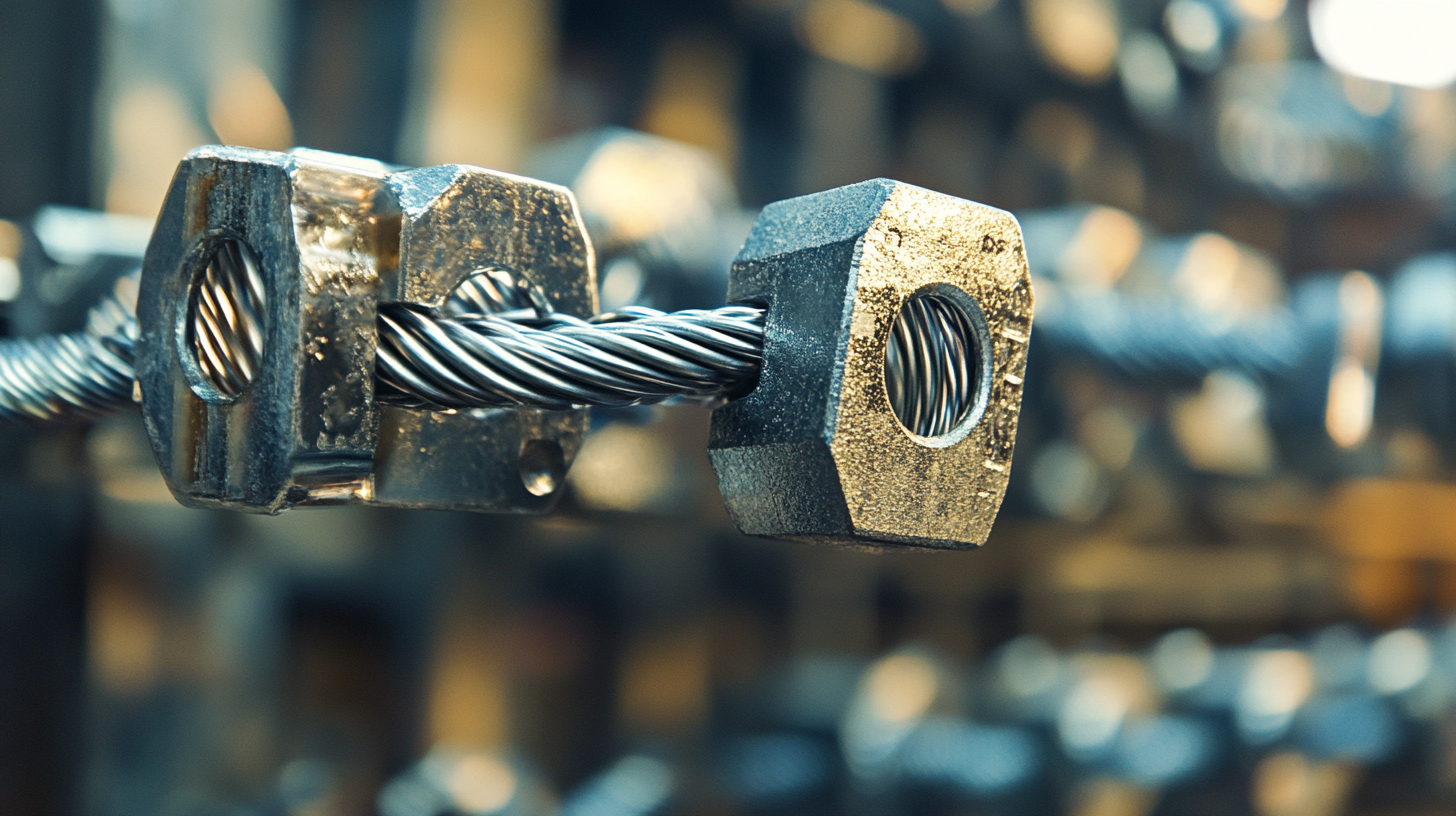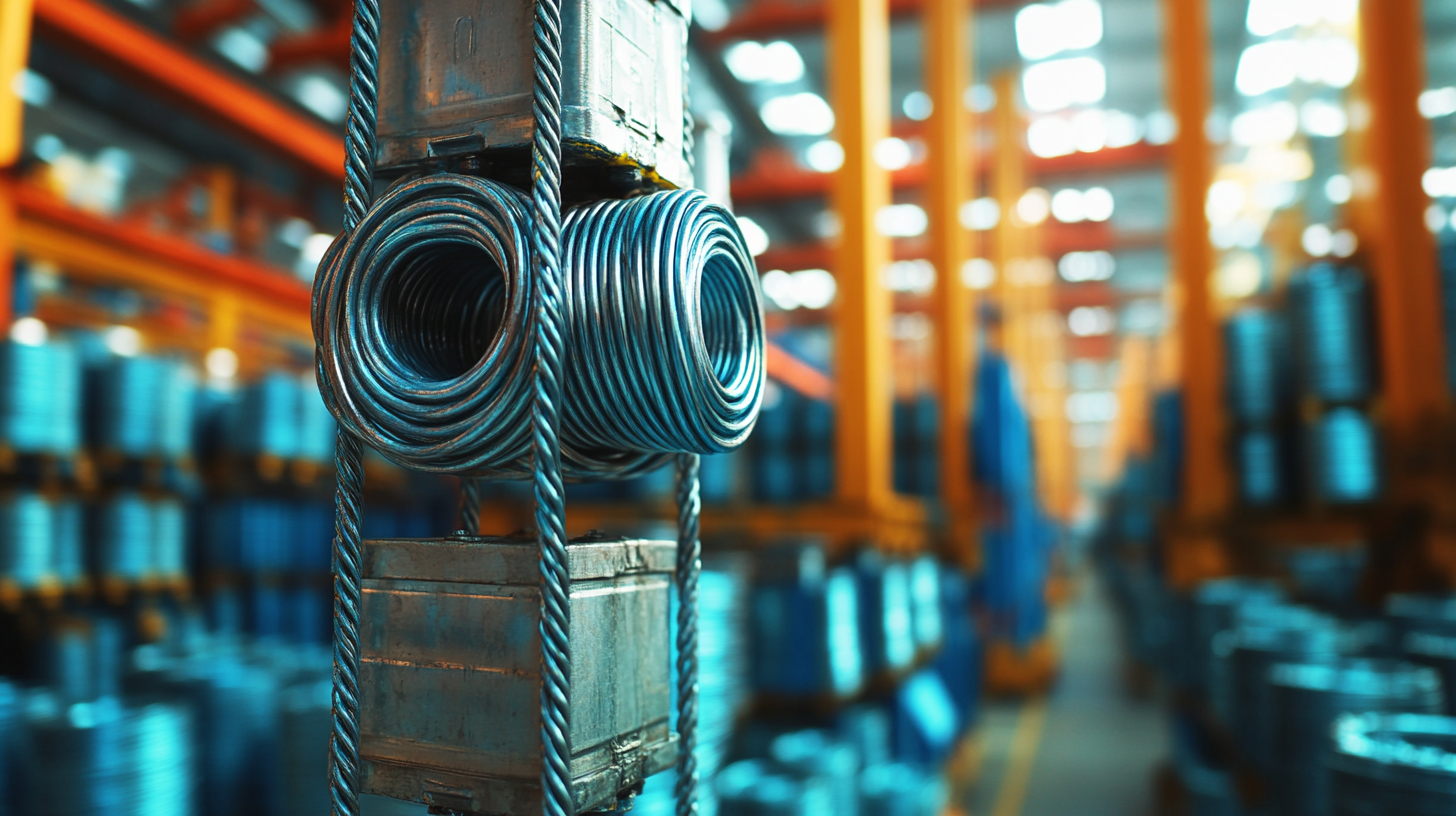
In the rapidly evolving global market for electrical components, the demand for Heavy Duty Wire Nuts has witnessed substantial growth, with a projected CAGR of 4.5% over the next five years, as reported by Market Research Future. These essential connectors, designed to ensure safe and reliable electrical connections, have become a crucial component in various applications, from construction to automotive industries. As the competition intensifies, understanding the import-export certifications surrounding these products is essential for manufacturers aiming to succeed internationally. By navigating the complex landscape of compliance and certification, businesses not only enhance their credibility but also unlock access to lucrative markets worldwide. This blog will delve into the various alternatives available for ensuring the certification of Heavy Duty Wire Nuts, providing critical insights that can help stakeholders make informed decisions in a competitive arena.

Understanding import-export certifications is crucial for companies involved in the global trade of heavy duty wire nuts. These certifications serve as a guarantee that the products meet specific international standards and regulations, which can vary significantly from one country to another. Key requirements often include compliance with safety standards, quality control measures, and environmental regulations. Wire nuts, being essential components in electrical installations, must abide by these regulations to ensure not only their functionality but also the safety of the end users.
In light of current events, such as the Department of Commerce's public hearing on the Section 232 investigation of steel imports, it becomes clear that trade regulations can have far-reaching implications on various industries, including electrical components. The outcome of such hearings may influence import policies, affecting how wire nuts are sourced and certified. For businesses aiming to thrive in the competitive global market, staying informed about these developments and ensuring compliance with the required certifications is essential to navigate the complexities of international trade effectively.
| Certification Type | Description | Key Requirements | Countries Recognizing |
|---|---|---|---|
| UL Certification | Safety certification by Underwriters Laboratories | Testing for performance, durability, and safety | USA, Canada |
| CE Marking | Conformity with health, safety, and environmental protection standards | Compliance with EU directives | European Union |
| RoHS | Restriction of Hazardous Substances in electrical and electronic equipment | Limits on lead, mercury, cadmium, and other substances | European Union, China |
| FCC Compliance | Compliance with Federal Communications Commission standards | Testing for electromagnetic interference | USA |
| ISO 9001 | International standard for quality management systems | Continuous improvement and customer satisfaction | Worldwide |
As the global demand for heavy-duty wire nuts continues to rise, understanding the market trends and statistics becomes essential for stakeholders in the electrical components industry. The forecasted growth across related sectors, such as the industrial fasteners market, which is projected to reach USD 104.12 billion by 2029, underpins this demand. With a compound annual growth rate (CAGR) of 3.5%, this expansion signals not only an increase in production but also a growing consumer need for reliable, high-quality electrical connections.
The cable assembly market is another vital area, expected to grow significantly from USD 178.6 billion in 2024 to approximately USD 322.6 billion by 2034, reflecting a robust CAGR of 6.2%. This upward trajectory highlights the ongoing investment in infrastructure and technological advancements in electrical systems. Additionally, related markets, like automotive connectors, are experiencing a surge in demand, driven by the rising popularity of electric vehicles and advances in automotive technology. Understanding these interconnected trends will help manufacturers and suppliers navigate the complexities of importing and exporting certifications to meet international standards and capture a larger share of the global market.

China's manufacturing sector is rapidly evolving, showcasing an impressive commitment to quality and compliance. The nation’s strength in producing robust electrical components, such as heavy-duty wire nuts, is increasingly underscored by rigorous adherence to international standards and certifications. As global demand rises, manufacturers in China leverage advanced technologies to enhance production efficiency and product reliability, thereby solidifying their position in competitive markets.
Moreover, China's strategic focus on integrating cutting-edge technology with traditional manufacturing processes creates a unique advantage. The push for “new quality productive forces” ensures that Chinese companies remain at the forefront of innovation, particularly in sectors reliant on high-quality components.
By enhancing their manufacturing capabilities and emphasizing quality control, Chinese producers are not only catering to domestic needs but are also expanding their footprint in the global supply chain, which is crucial amid geopolitical tensions and fluctuating trade dynamics. As countries like the United States impose restrictions on technology exports, China's commitment to bolstering its sector through quality and compliance may position it favorably for future growth in industries such as electronics and automotive.
When it comes to heavy-duty wire nuts, understanding international certifications is crucial for ensuring product quality and safety. Two of the most recognized certifications are CE (Conformité Européenne) and UL (Underwriters Laboratories). CE marking indicates that a product meets EU safety, health, and environmental requirements, making it essential for companies looking to enter European markets. This mark is a statement from the manufacturer that their product complies with all applicable European directives, signifying reliability and enhancing consumer trust.

On the other hand, UL certification is predominantly recognized in North America and focuses on safety standards for electrical components. UL tests products rigorously to ensure they are safe for consumer use, and obtaining this certification can significantly boost a manufacturer’s credibility in the competitive landscape. Companies that prioritize both CE and UL certifications not only display a commitment to safety and quality but also open up their products to a broader international market, aligning with various trade regulations. Understanding these certifications is essential for navigating the complexities of global trade in heavy-duty wire nuts.
In today's global trade environment, compliance is paramount, especially in the import-export sector of heavy-duty wire nuts. Navigating supply chain considerations requires a thorough understanding of both international and local regulations that govern the manufacture, sale, and distribution of electrical components. Ensuring that all products meet the specified certifications is not only crucial for legal compliance but also for maintaining the integrity and safety standards demanded by consumers and businesses alike.
To effectively manage compliance in the global market, companies need to establish a robust supply chain management system that emphasizes transparency and traceability. This includes conducting regular audits of suppliers to confirm adherence to certification requirements, as well as staying updated on the evolving regulations in different countries. With wire nuts, where quality and safety cannot be compromised, fostering strong relationships with reliable suppliers and logistics partners is essential. By prioritizing compliance along every step of the supply chain, businesses can mitigate risks and strengthen their position in the competitive landscape of heavy-duty electrical components.
